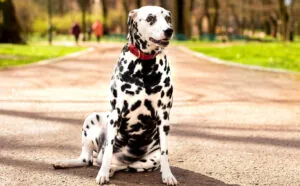Spaying and Neutering
Spaying or neutering is one of the most responsible ways dog owners can care for their pet. First-time dog owners are likely to have many questions about spaying and neutering procedures, from the risks involved to how much they will cost. Here are some answers to the most common questions that pet parents have about the spay and neutering process.
Why Spay or Neuter?
Animal shelters around the country are filled with unwanted puppies and dogs. The American Society for the Prevention of Cruelty to Animals (ASPCA) reports that approximately 6.5 million animals enter the shelter or rescue system annually. Of those 6.5 million animals, only an estimated 3.2 million find their way out of the shelter or rescue and into a home. Spaying and neutering reduces the number of unwanted litters, which, in turn, helps to reduce the number of unwanted pets or stray animals that enter shelters or rescues.
Benefits of Spaying (females):
- No heat cycles, therefore, males will not be attracted
- Less desire to roam
- Risk of mammary gland tumors, ovarian and/or uterine cancer is reduced or eliminated, especially if done before the first heat cycle
- Reduces number of unwanted cats/kittens/dogs/puppies
- Helps dogs and cats live longer, healthier lives
Benefits of Neutering (males):
- Reduces or eliminates risk of spraying and marking
- Less desire to roam, therefore less likely to be injured in fights or auto accidents
- Risk of testicular cancer is eliminated, and decreases incidence of prostate disease
- Reduces number of unwanted cats/kittens/dogs/puppies
- Decreases aggressive behavior, including dog bites
- Helps dogs and cats live longer, healthier lives
When to Spay and Neuter a Pet
- Puppies: Six to Nine Months
- Adult Dogs: Any age as long as they are healthy. There may be a higher risk for adult dogs with post-operative recovery. Obesity and poor health can affect an adult dog with high-risk spay and neuter.
Recovery From Spay and Neuter Surgery
Dog owners can help their pets have safe and comfortable recoveries after being spayed or neutered by following some of these tips below:
- Keep the dog inside and away from other animals during the recovery period.
- Don’t let the dog run around and jump on and off things for up to 2 weeks after surgery, or as long as the vet advises.
- Ensure the dog is unable to lick their incision site by using a cone (popularly known as the “cone of shame”) or other methods, as recommended by the vet.
- Check the incision every day to make sure it’s healing properly. If redness, swelling, discharge or a foul odor are present, contact your vet immediately.
- Don’t bathe the dog for at least 10 days post-surgery.
- Call the vet if the dog is uncomfortable, is lethargic, is eating less, is vomiting or has diarrhea.
What Does It Cost to Spay or Neuter Your Dog?
The cost of spaying or neutering a dog varies widely by geographic area as well as the size of the dog. Petfinder reports that most animal hospitals charge more than 300 dollars for the surgery. A low-cost clinic may charge in the range of 45 to 135 dollars, but this varies by location.
Voucher programs usually assist qualified, low income pet owners to fix their dogs/cats by subsidizing (paying a portion of the cost) of spay/neuter for their pets. Once qualified, clients are typically charged a copay or reduced cost for the surgery based on the type and sex of the animal being sterilized. The client is usually provided a list of providers working with the voucher program making it convenient for most pet owners.
Share This Post
Recent Posts
About Shallowford Animal Hospital
Shallowford Animal Hospital and The Pet Spa at Shallowford are dedicated to the exceptional, compassionate care your pet deserves. Pets hold a very special place in our families, and we treat yours like our own.



